Yates Account
Join now
Create a Yates account today!
Sign up to join the Yates Garden Club for monthly e-mails packed with seasonal inspiration, tips for success & exclusive promotions.
Plus if you’re a Garden Club member you can take part in the Yates Growing Community - a blog to share successes, get advice & win prizes in fun challenges along the way!

Forgot password
Enter the email address associated with your account, and we'll email you a new password.

When you consider that the energy for plant nutrition comes from sunlight, gardening in the shade presents some obvious challenges. Most plants aren’t suited to low light conditions, so they won’t thrive in deep shade.
Fortunately, there are lots of plants that are happy in the gloomy sections of the garden. Shady areas may not give you the same wide choice of colourful flowers as sunny spots, but you still have some gorgeous options!
Choosing shade-tolerant plants with colourful, vibrant foliage is also a clever way to illuminate a dark site.
Here are some of our favourite choices, to bring some sparkle and light up a shadowy garden.
Most gardens have a shady area in them somewhere. The South side of your house, or that perma-shadow cast by a fence or tree might feel like a challenge, but there's good news: you can make shade work for you and get gorgeous results.
Many, many plant species have evolved to grow in shady environments. Generally, these species are much more efficient at absorbing sunlight than sun-loving plants, so they can thrive on the indirect light that reaches them. This also explains why these shade-lovers often struggle when planted in direct sun - it's too much of a good thing and it can bleach or burn their sensitive leaves.
There are different degrees of shade, ranging from lightly dappled part-shade, to deep, gloomy shadow. Every different level of darkness has plants that have adapted to match it, to make the best of the available light.

Hydrangeas are favourites for deep shade.
Successful shade gardening is all about looking at the light levels you have to work with, then choosing plants from the pool of compatible options (the pool gets smaller as your garden gets darker). Generally, shade-loving plants don't offer the abundant brightly-coloured flowers you'd expect if you were planting in full sun. As a result, shady sites demand extra creativity from gardeners!
Clever methods to add colour to a shady garden are to use plants with colourful and dramatic foliage to catch the eye, along with choosing light-coloured flowers that stand out in low light. Likewise, choosing plants with powerfully contrasting light or dark foliage is a very effective tactic to add visual appeal to a dim area.

You can bend the rules a little bit if you want to plant sun-loving flowers in part-shade, but they really need 3-6 hours of sunlight a day to be at their best. If they only get the bare minimum light, they won't bloom to their full potential. If your garden is shadier than that, here are our suggestions for the best plants for the job!
These shade-lovers are all plants that will thrive in low-light conditions. If you have a problematic area to plant, these are our go-to favourites.

Bergenia
Best Flowers for Deep Shade
Plants growing under trees need to be able to compete with the tree’s roots. Tough, strappy-leaved clivias do very well in these situations – their fleshy roots seem able to extract what they need, even when crowded under mature trees.
Bergenia is also an excellent choice to hold its own under established trees. Its pink flowers are very pretty, but even when it's not flowering, the lush curvy leaves bring you a touch of the subtropics.
For traditional border flowers that cope with deep shade, you can't go past foxgloves. Yates Foxglove 'Coral Chimes' or Yates Foxglove 'Foxy' produce masses of flowers on tall, elegant stems.
Hybrid fuchsias are very much at home in deep shade. Famous for their vibrant, flamboyant flowers, fuchsias come in a range of sizes and shapes; from shrubs to trailing groundcovers.

Hydrangeas are a time-honoured choice for dark areas. You can choose between traditional shrub-sized 'mophead' cultivars, or more compact dwarf varieties, to enjoy absolutely gorgeous flowers.
Closer to ground level, there are some easy-to-grow foliage plants that look wonderful in a shady garden. In temperate and cool regions, hostas add sculptural texture and lush colour to a planting scheme.
Shade-tolerant heucheras are perfect for underplanting; their leaves deliver a stunning palette of rich colour options, from lime green through to moody deep burgundy.
In warmer areas, bromeliads are an excellent choice. When they aren't flowering, their colourful striped or variegated leaves really draw the eye. Many bromeliads are epiphytes – i.e. they grow naturally on trees – so they don’t require much room for their roots. They're happy to perch up in the tree canopy, or fill gaps beneath trees in frost-free gardens. Many species from the Vriesea, Alcantarea, Nidularium and Neoregelia families are comfortable in low-light sites.

Bromeliad Nidularium innocentii
Flower Choices for Medium Shade
Ajuga is an ideal choice for underplanting in moderate shade. It produces a carpet of purple, blue and white flower spikes in spring and early summer. Ajuga's leaves are part of its appeal...they range from green to purple to bronze, with some intriguing variegated varieties available.
Liriope also has bright violet or purple flower spikes, emanating from robust strappy leaves. Flowers appear in summer and autumn. Liriope is a slow-growing perennial, famous for its ability to tolerate a wide range of climate conditions.
Hellebores, also known as 'Winter Roses', provide an abundance of beautiful floral colour in winter. They are hardy perennials, well-suited to shady areas under trees, in pots, or in sheltered courtyards where they receive filtered light. Hellebores were associated in Mediaeval folklore with witches; it's easy to see why when you see their deep, dark moody blooms popping out of the shadows! Available in a range of colours from creamy white through to delicate pastel pinks into deep vibrant magentas, there's certain to be one that'll put a spell on you.

Hellebores - the 'Winter Rose'.
Compact cineraria produces pretty daisy-like flowers in late autumn and winter, when cheerful colour is very welcome. Flowers come in shades of white, blue, purple, magenta and pink, with lots of interesting bicolours available. Cineraria are usually treated as annuals.
We offer a unique cineraria, Yates Cineraria 'Silver Dust', that's planted for it's striking silver foliage rather than its flowers. When you want to add light and dark contrast to your colour scheme, it's an absolute winner.
Vigorous Astilbe flowers in summer, producing unique, feathery plumed flowers, in white, pink and red shades. Astilbe prefers moist soil conditions and plants become dormant in winter.

Forget-me-nots
Deciduous trees offer the best opportunity for underplanting because they let in light while they're leafless; this allows you to plant spring bulbs, that flower before the tree canopy fills out. Bluebells are very happy in a lightly-shaded situation under trees. You can let them 'naturalise' and they'll pop up every spring in a carpet of dainty blue flowers. Likewise, bell-shaped fritillaria is an excellent spring bulb option. Forget-me-nots are also a lovely choice for a carpet of spring flowers, under tree cover.
Cyclamen (Cyclamen hederifolium) is a very pretty choice for underplanting deciduous trees, in showy drifts. Cyclamen grow from both seed and tubers; preferring well-drained soil.
Begonias come in a wide range of shapes and sizes, so there’s one for just about any garden. Tall-growing angel’s wing begonias are some of the most striking. Along with their attractively spotted leaves, they produce hanging clusters of pink or white flowers. Begonias are susceptible to fungal diseases, especially powdery mildew, so check them regularly and use Yates Rose Gun Spray Ready to use at the first signs of disease.

Cyclamen (Cyclamen hederifolium)
Iresine (AKA Bloodleaf) is a rich ruby-coloured filler for dim areas of the garden. It can become a permanent feature in warmer areas, but will need to be replanted each year where winters are cold. Fortunately, iresine grows readily from cuttings.
Primulas are traditional favourite winter and spring flowering annuals. They have delicate candelabra-like pink, white or mauve flowers that sit above the lovely ruffled foliage. Great for adding a soft touch to the winter garden.
Annual coleus is also an old-fashioned favourite, for its bright and endlessly varied colours and patterns. Coleus grows readily from seed, so it's a reasonably economical solution to fill out a shady area. Sow coleus seeds into starter trays, grow on in pots and transplant once the seedlings are a good size.

Colourful Coleus
Hardy Flowers for Light Shade:
Our all-time favourites include ageratum, alyssum, aquilegia, calendula, Canterbury bells, echinacea, linaria, lobelia, nasturtium, nigella, pansy, polyanthus, schizanthus, viola, Virginian stock and wallflower. These examples all do just as well in full sun as they will in light shade, plus they will give you a wider choice of colour then the hardcore shade-lovers we've suggested above.
To feed any of the flowers we've mentioned in this article, Yates Thrive Rose & Flower Granular Plant Food is our go-to solution to deliver essential nutrients gradually, for up to 12 weeks. It contains a tailored blend of trace elements to improve flowering plant health - it's high in potassium for larger, more abundant blooms, plus calcium and iron to boost plant vitality and intensely colourful flowers.
Pro Tip: A clever option to introduce bright colour into deep shade is to fill multiple pots with the 'semi-shade' choices listed just above, placing half the pots in the dark spot, half in the sun. Then, if you frequently swap the pots in and out of the shade, you'll give them much better conditions for flower production (plus it avoids the plants stretching towards the light and getting spindly).
Don't forget, if you aim to bring colour and interest into the shadowy parts of the garden, you can always cheat! Add sparkle by hanging garden art or wind chimes from trees, especially if they have bright colours or reflective surfaces. Let your imagination run wild...

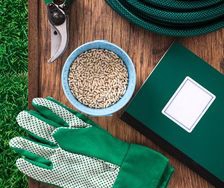
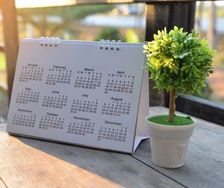
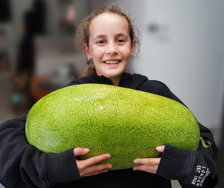
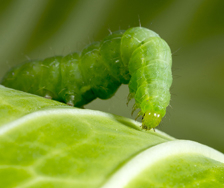
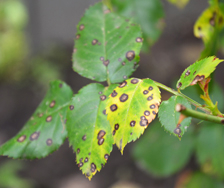
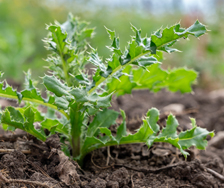
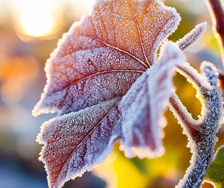
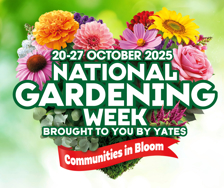











Share
Share this article on social media